-
 New productBrake cable
New productBrake cable- €1.35
-
 New productRear brake for racing bike
New productRear brake for racing bike- €8.99
-
 New product -40%Brake caliper Shimano Ultegra BR-R8000
New product -40%Brake caliper Shimano Ultegra BR-R8000- €50.99
- €84.99
-
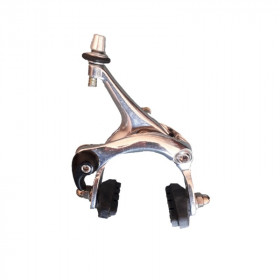 New productFront brake caliper for road bike
New productFront brake caliper for road bike- €8.99
-
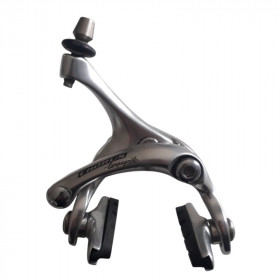 UsedBrake caliper Campagnolo Chorus
UsedBrake caliper Campagnolo Chorus- €24.99
-
 UsedCampagnolo Centaur brake caliper
UsedCampagnolo Centaur brake caliper- €21.99
-
 UsedCampagnolo Record brake caliper
UsedCampagnolo Record brake caliper- €28.99
-
 New productRear brake caliper Shimano Ultegra BR-6810-RS
New productRear brake caliper Shimano Ultegra BR-6810-RS- €49.99
-
 UsedRear brake caliper Shimano Dura-ace BR-7800
UsedRear brake caliper Shimano Dura-ace BR-7800- €24.99
-
 New product -32%Rear brake caliper Shimano Dura-ace BR-R9010-RS
New product -32%Rear brake caliper Shimano Dura-ace BR-R9010-RS- €152.97
- €224.95
-
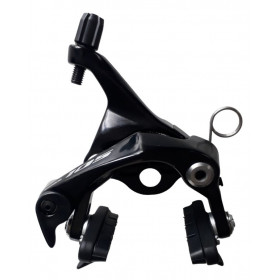 New product -47%Front brake caliper Shimano 105 BR-R7010-F
New product -47%Front brake caliper Shimano 105 BR-R7010-F- €33.38
- €62.99
-
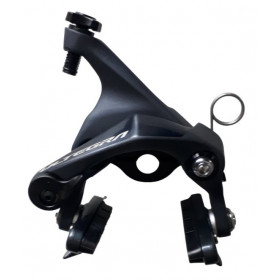 New product -30%Front brake caliper Shimano Ultegra BR-R8010-F
New product -30%Front brake caliper Shimano Ultegra BR-R8010-F- €69.99
- €99.99
-
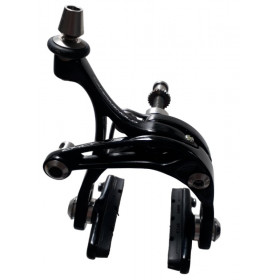 New product -22%Front brake caliper Campagnolo Chorus
New product -22%Front brake caliper Campagnolo Chorus- €38.21
- €48.99
-
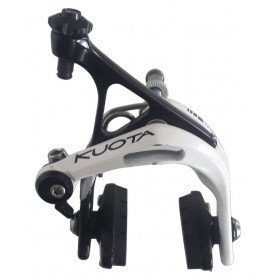 New product -50%Kuota HBP front brake with brake pads for road bike
New product -50%Kuota HBP front brake with brake pads for road bike- €25.00
- €49.99
-
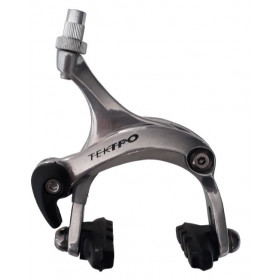 New productRoad bike rear brake Tektro
New productRoad bike rear brake Tektro- €12.99
-
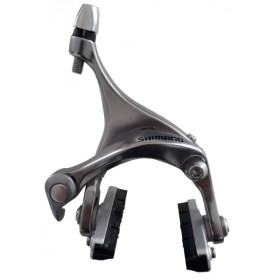 New product -43%Rear brake caliper Shimano BR-R561 grey
New product -43%Rear brake caliper Shimano BR-R561 grey- €29.63
- €51.99
-
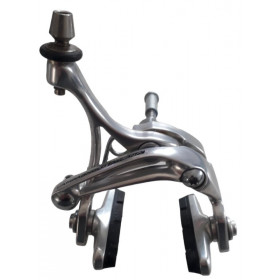 New product -22%Campagnolo Athena 11s Skeleton front brake
New product -22%Campagnolo Athena 11s Skeleton front brake- €68.78
- €88.18
-
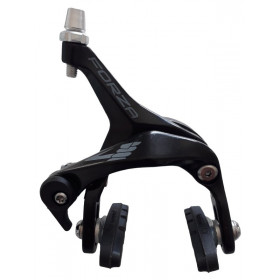 New product -55%Rear brake caliper 4ZA Forza
New product -55%Rear brake caliper 4ZA Forza- €31.46
- €69.90
-
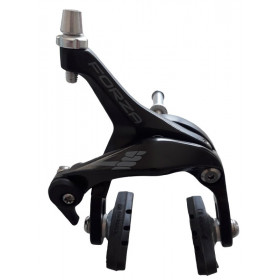 New product -55%Front brake caliper 4ZA Forza
New product -55%Front brake caliper 4ZA Forza- €31.46
- €69.90
-
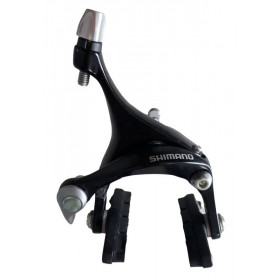 New product -43%Front brake caliper Shimano BR-R561
New product -43%Front brake caliper Shimano BR-R561- €29.63
- €51.99
-
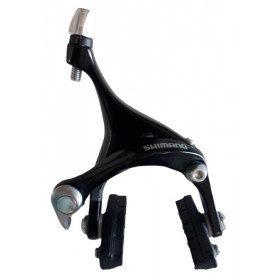 New product -43%Rear brake caliper Shimano BR-R561
New product -43%Rear brake caliper Shimano BR-R561- €29.63
- €51.99
-
 New product -60%Brake caliper Shimano Tiagra BR-4700
New product -60%Brake caliper Shimano Tiagra BR-4700- €16.20
- €40.50
-
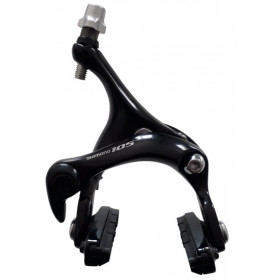 New productBrake Shimano 105 BR-5501
New productBrake Shimano 105 BR-5501- €24.99
-
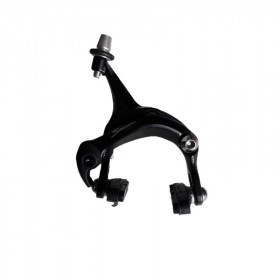 New productRear brake caliper for road bike
New productRear brake caliper for road bike- €9.99
-
 New productRear brake caliper for road bike
New productRear brake caliper for road bike- €8.99
-
 New productRear brake caliper for road bike
New productRear brake caliper for road bike- €9.99
-
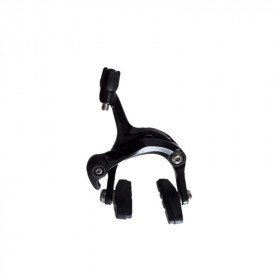 New productRear brake for road bike
New productRear brake for road bike- €7.99
-
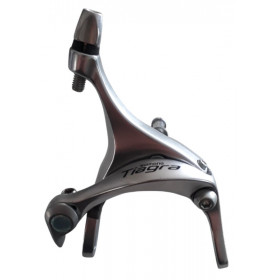 New product -30%Shimano Tiagra BR-4600 front brake
New product -30%Shimano Tiagra BR-4600 front brake- €34.99
- €49.99
-
 More detailsUsed Out-of-StockShimano RX100 brake caliper
More detailsUsed Out-of-StockShimano RX100 brake caliper- €9.99
-
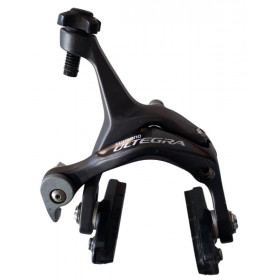 More detailsUsed Out-of-StockShimano Ultegra BR-6700 rear brake used
More detailsUsed Out-of-StockShimano Ultegra BR-6700 rear brake used- €24.99
-
 More detailsNew product -50% Out-of-StockBrake Shimano 105 BR-5800 black
More detailsNew product -50% Out-of-StockBrake Shimano 105 BR-5800 black- €27.98
- €55.95
-
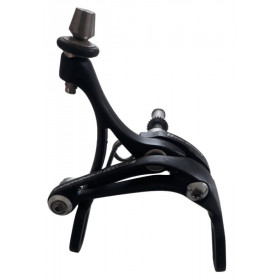 More detailsNew product Out-of-StockCampagnolo Veloce front brake
More detailsNew product Out-of-StockCampagnolo Veloce front brake- €29.99
Showing 1-32 of 32 item(s)
Road bike brakes: everything you need to know about this essential element of your performance and safety
When we talk about road bikes, we often think about the lightness of the frame, the thinness of the wheels, the aerodynamics of the road bike fork, or even the drivetrain. But if there's one component that deserves your full attention, it's the road bike brake. Both a guarantee of your safety and a cornerstone of your control on the road, the braking system plays a central role, both on winding descents and during the most demanding sprints.
Types of brakes on a road bike
1. Rim brakes (rim brakes)
Historically the most common, these brakes act directly on the surface of the rim. Road bike brake levers activate a cable that clamps the brake pads against the rim, creating the friction needed to slow down.
Specific features depending on the rim material:
- Aluminum rims: excellent heat dissipation, good grip even in the rain, slow wear. These are the most compatible with traditional rim bike brakes.
- Carbon rims: much more demanding. Carbon heats up quickly under prolonged braking, which can lead to a loss of efficiency or even deformation. It is therefore essential to use specific brake pads for carbon rims, often made with softer, heat-resistant composites. Braking is often less responsive, especially in the rain.
Advantages of rim brakes:
- Optimal lightness
- Quick and easy maintenance
- Ideal for amateur cyclists or purists
Disadvantages:
- Less efficient on carbon rims
- Sensitive to weather conditions
- Less consistent on long descents
2. Disc brakes
Increasingly common on recent road bike models, disc brakes consist of a disc attached to the wheel hub and a caliper equipped with pads. They operate by mechanical or hydraulic cables.
Advantages:
- Superior braking power, even in wet conditions
- Consistent performance regardless of rim material (aluminum or carbon)
- Less thermal stress on the rims, making them ideal for carbon wheels
Disadvantages:
- Heavier weight
- More technical maintenance (bleeding, centering)
- Requires a compatible frame and fork
Technical characteristics of a good road bike brake
Choosing a good road bike brake isn't simply about choosing the most powerful or lightest model. You need to consider a set of technical criteria directly related to your bike's geometry, the nature of your rides, and the components you use, including the road bike's wheels, fork, and road bike frame. Here are the main elements to evaluate to make an informed choice:
Braking power: controlling kinetic energy
Braking power is the system's ability to effectively slow the bike, even at high speeds or on long descents. This power depends on several factors:
- The type of brake (disc or rim brake)
- The rim material (carbon or aluminum)
- The contact surface of the brake pads
- The type of force transmission (mechanical or hydraulic cable)
Hydraulic disc brakes generally offer superior, stable, and consistent braking power, even in extreme conditions. This is a major asset for mountain bikers or competitors looking for maximum precision.
Progressiveness: the finesse of control
Progressiveness refers to the ability to precisely control braking force. Braking too hard can cause the wheel to lock, especially the front wheel, jeopardizing the cyclist's balance. Conversely, good progressiveness allows for smooth and controlled slowing.
This depends on:
- The quality of the road bike brake levers, particularly their travel and ergonomics
- The flexibility of the system (cable vs. hydraulic)
- The type of brake pads used (softer materials = better progressiveness)
On wet, granular ground, or on technical descents, this ability to brake "to the millimeter" is essential for maintaining traction and stability.
System weight: every gram counts
Weight plays a crucial role, especially for climbers and long-distance cyclists. Rim brakes are often preferred for their lightness, with single calipers sometimes weighing less than 150g. Conversely, disc brakes (calipers + rotors + hoses + brake fluid) are heavier, but their increased performance can compensate for this extra weight depending on your riding style.
For a lightweight carbon road bike frame, every gram saved can make a significant difference on mountainous routes.
Brake pad compatibility: each rim has its own requirements
An often underestimated factor: the match between the brake pads and the material of your rims.
Aluminum rims: compatible with standard, rubber, or classic composite brake pads. Good heat dissipation, effective braking even in the rain.
Carbon rims: require specific brake pads designed to prevent overheating and premature wear of the brake track. These pads are generally softer and sometimes ribbed to better manage heat.
An incorrect choice of brake pads can lead to:
- Accelerated wear of your rims
- Loss of braking grip
- Screeching noises or vibrations
- Dangerous overheating when descending
Some brands (SwissStop, Campagnolo, Shimano, Zipp, etc.) offer brake pad models specifically adapted to their carbon wheels, guaranteeing compatibility and performance.
General compatibility: frame, fork, wheels
Before any changes or improvements to your braking system, make sure that:
- Your road bike frame and fork accept the desired mounting (mounts for conventional calipers or flat mount/disc calipers)
- Your wheels are compatible with disc brakes if you choose this type of brake (hubs with disc mounts)
The clearance at the fork allows for the caliper and disc (especially with wider tires)
Brake levers: the cockpit under control
At the heart of a road bike's cockpit, brake levers play a strategic role. They don't just activate braking: they're the first interface between your hands and the machine. Whether you're accelerating, on a technical descent, or emergency braking, their design directly impacts your responsiveness, comfort, and steering precision.
Dual function: braking and shifting
Road bike brake levers are generally integrated with shifters in a system called "STI" (Shimano Total Integration, equivalents at SRAM or Campagnolo). A single lever therefore performs two functions:
Brake by pulling towards you
Shift gears by pushing laterally (or using a second lever, depending on the brand)
This all-in-one integration simplifies the cockpit and limits movement, for maximum efficiency in racing and training.
Ergonomics and comfort: every hand is unique
The shape of the lever and its position on the handlebars significantly influence the grip. Manufacturers offer different designs to adapt to the cyclist's body shape:
- Lever shape: more or less curved, hollowed, long, or compact
- Position on the handlebars: varies according to preference (high for comfort, low for aerodynamics)
- Contact surface: non-slip, textured, or smooth depending on the model
For smaller hands, some models offer adjustable reach: the lever can be brought closer to the handlebars, making braking easier without having to overextend the fingers, whether using rim or disc brakes.
Fine-tuning and braking precision
Quality levers allow you to adjust several parameters to optimize braking feel:
- Reach adjustment (distance between lever and handlebar)
- Dead travel (distance to brake contact point)
- Cable tension (for mechanical systems)
- Bleeding and pressure (for hydraulic systems)
These adjustments are particularly useful for hydraulic disc brakes, where precise lever pressure translates into immediate caliper response. A good lever provides progressive, smooth, and powerful braking, even on wet surfaces or during extended braking.
Materials and performance
Brake levers are made from different materials depending on the model:
- Aluminum: strong, lightweight, a good compromise for versatile cyclists
- Carbon: very light, rigid, used on high-end models to save weight
- Reinforced plastic: reserved for entry-level models, less durable
Some high-end levers also incorporate titanium axles, ball bearings for greater fluidity, or sealed internal mechanisms.
When and how should you maintain your bike brakes ?
A high-performance road bike brake is, above all, a well-maintained brake. Over the miles, natural wear, weather conditions, and dust can impair braking efficiency, increase stopping distances, or generate unwanted noise. Regular maintenance is therefore essential, not only to preserve your components, but also to ensure your safety. The type of brake (rim or disc) and the material of your rims determine the areas of concern.
Rim brake maintenance
On aluminum rims:
Check the brake pads for wear: most have a wear indicator groove. Once this groove is erased, it's time to replace the pads.
Clean the rim's braking surface regularly: use a dry cloth or a mild degreasing product to remove pad dust, dirt, or metal residue. This prevents "glazing" (crystallization of the rubber).
Check the alignment of the pads: they should be parallel to the rim and not rub against the tire.
Tip: If you hear a squeaking noise, it could be due to a misaligned pad or a greasy deposit on the rim.
On carbon rims:
Change the pads more often: the more abrasive surface of carbon rims wears the pads more quickly, even if they are specially designed.
Use only carbon-compatible brake pads: aluminum brake pads are prohibited, as they can overheat and damage the rim.
Avoid prolonged braking (especially when descending): carbon heats up more than aluminum and can warp or delaminate if the temperature is excessive.
Inspect the rims: watch for signs of overheating (discoloration, localized swelling) or uneven wear.
Disc brake maintenance
Disc brakes require different attention depending on whether they are mechanical or hydraulic:
For all types:
Check pad wear: replace them if the lining thickness is less than 1 mm. A wear indicator is often visible.
Clean the discs regularly: use a specific disc brake cleaner (isopropanol type). Avoid contact with oil, lubricants, or your fingers: even the slightest contamination reduces grip.
Monitor disc runout: a warped disc causes intermittent friction. It can sometimes be straightened using a specific tool.
For hydraulic systems:
Regular bleeding: if you experience a spongy lever, excessive travel, or a loss of power, bleeding the hydraulic system is necessary. The frequency depends on usage (approximately 1 to 2 times per year).
Check for leaks: Leaks or air bubbles in the system affect braking.
Replace the brake fluid according to the manufacturer's recommendations (DOT or mineral oil).
When should you service your brakes ?
Here's a simple guide to help you schedule your checks:
| Frequency | Recommended action |
|---|---|
| Every outing | Visually check the condition of the pads or pads |
| Every 2-3 weeks | Clean the braking surfaces |
| Every 1 000 to 2 000 km | Change the pads/shoes if necessary |
| 1 to 2 times per year | Bleeding the hydraulic system (if disc) |
| In case of noise, loss of power or change of conditions (rain, mountain) | Immediate inspection and thorough cleaning |
In conclusion
A road bike brake isn't just an accessory; it's a true precision tool that determines your confidence on the road. Whether you opt for classic rim brakes or the latest generation of disc brakes, take the time to understand their specific features and adapt them to your riding style, your road bike frame, fork, and wheels. The quality of your braking can make all the difference between a good and an excellent cyclist.
